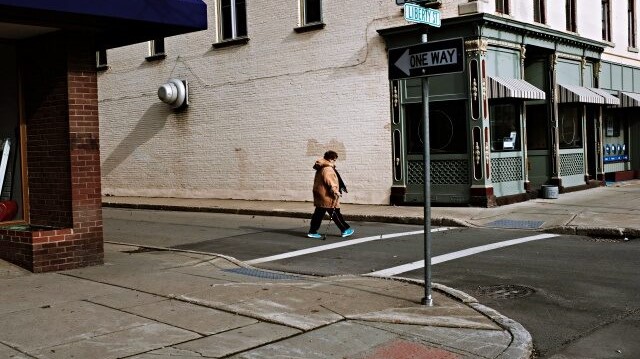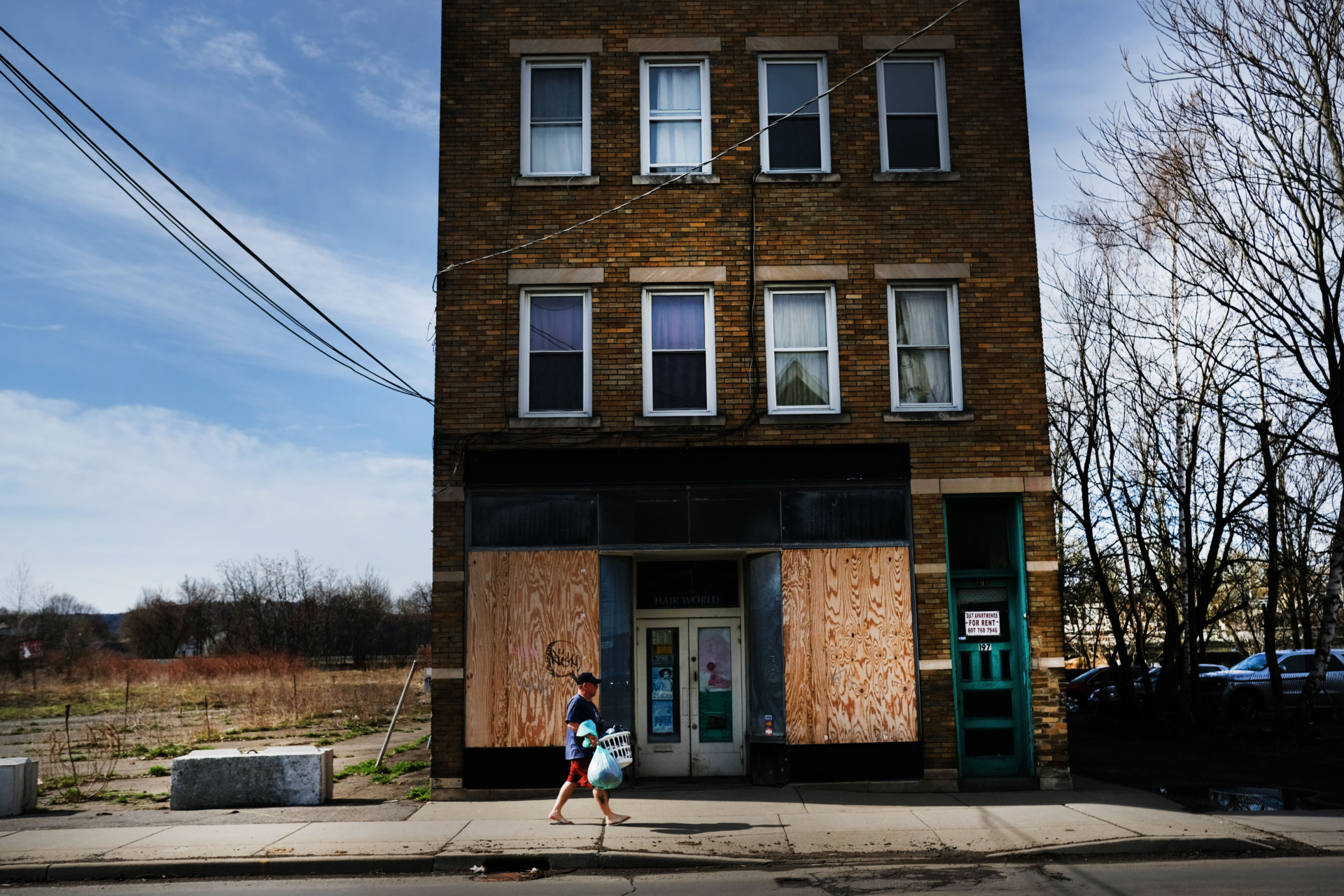
Blue states saw the largest population declines in 2022, while red states topped the list with the most population growth, United States Census Bureau figures reveal.
This year, California saw more than 343,000 residents leave the state — more than any other in the nation — followed by nearly 300,000 residents who left New York, and almost 142,000 residents who fled Illinois.
At the same time, more Americans resettled in Florida, more than 318,000, than any other state this year. Texas saw the second-largest net domestic migration with nearly 231,000 Americans moving to the state, followed by North Carolina, where almost 100,000 Americans moved.

A man walks through the city on April 13, 2019 in Binghamton, New York. According to recent data released by the U.S. Census, New York was one of nine states that saw a population decline between July 1, 2017 and July 1, 2018, losing 48,510 residents. (Spencer Platt/Getty Images)
The growth of Texas, for instance, now makes it one of only two states that has a more than 30 million residents. The other state to have that many is California. In just the last 22 years, Texas has added more than 10 million residents.
By region, the South was the fastest growing this year — adding about 1.3 million residents, nearly 868,000 of which were Americans who moved to the South and the other 415,000 who were newly arrived immigrants.
The West, likewise, grew in population, adding fewer than 154,000 residents. Meanwhile, the Northeast and Midwest both saw population declines this year, attributed to Americans moving out of both regions for other destinations in the South and West.
The Northeast, alone, lost nearly 219,000 residents this year, while the Midwest saw almost 49,000 Americans leave the region.
In total, the U.S. population climbed to a record 333 million residents this year. More than 80 percent of the rapid population growth is driven by the nation’s legal immigration policy that brings more than a million foreign nationals to the U.S. annually and gives them green cards.
Without immigration, the U.S. population would have stabilized at a comfortable 245,000 new residents last year as the result of new births versus deaths.



